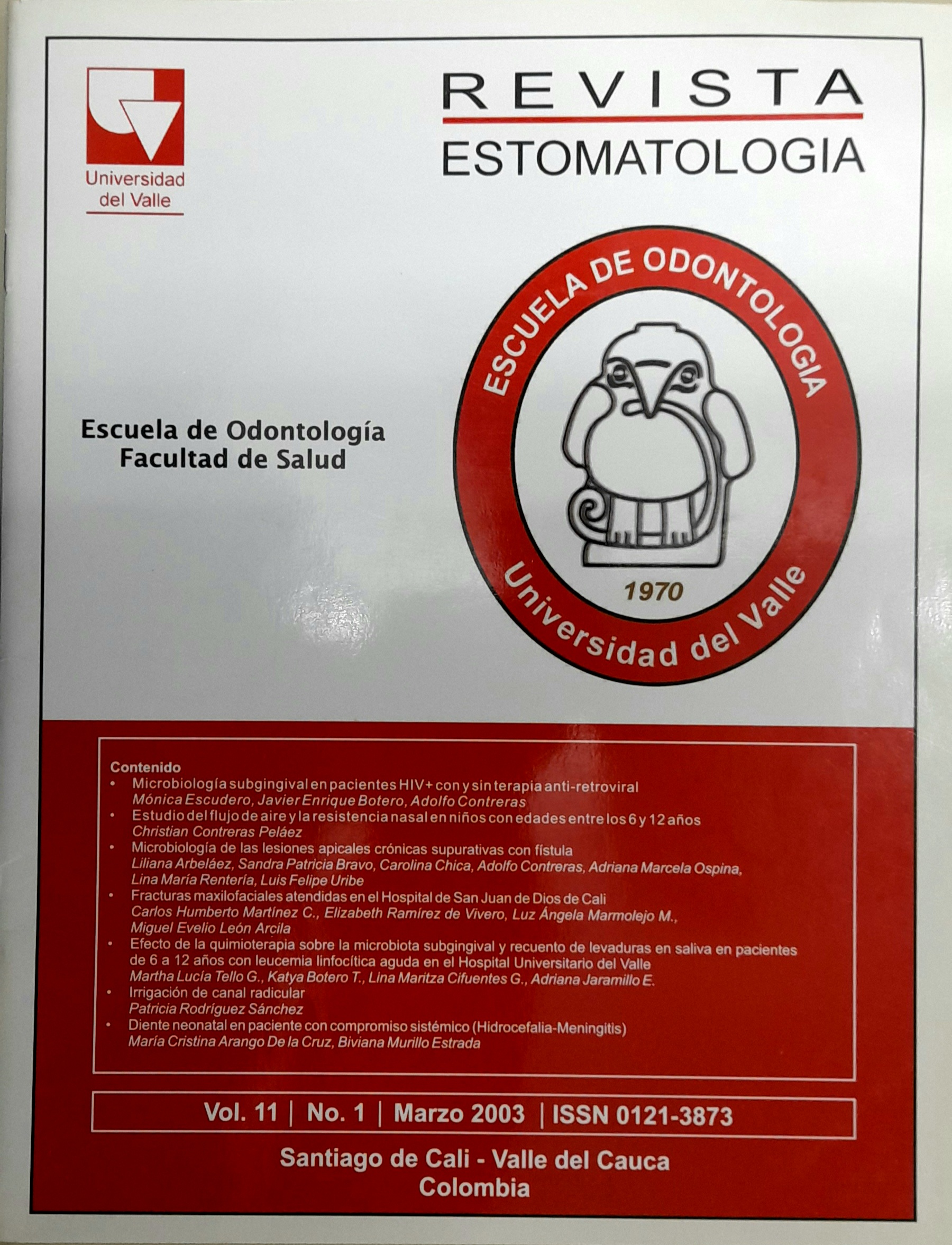Microbiología subgingival en pacientes HIV+ con y sin terapia anti-retroviral
Main Article Content
The oral cavity could be the primary place for the establishment oflesions associated with HIV infection inc1uding leukoplasia, Kaposi sarcoma, oral candidiasis, ulcerative gingivitis and periodontitis. This study evaluated the subgingival microbiota and periodontal status in HIV (+) patients with and without anti-retroviral therapy. Twenty two subjects with anti-retroviral therapy and nine subjects without treatment anti-retroviral therapy participated voluntarily in the study, which was approved by the committee on human research ofthe Universidad del Valle. Clinical data including bleeding on probing, suppuration, pocket probing depth, mobility andplaque index were recorded. Subgingival microbial samples were collected from the deepest sites for culturing analysiso Statistical analysis was carried out using the Pearson correlation test, Friedman test and SSPS software for Windows (p<0.05). Different states of severity in the periodontallesions and a subgingival microbiota that encompassed gram negative enteric rods, Fusobacterium spp and Porphyromonas gingivalis were observed. A detailed description of findings is given in the results ofthe study. On considering the limitations ofthe study, antiretroviral therapy did not influence the subgingival microbiota and periodontal state in HIV (+) patients. The subgingival microbiota appears to be similar to that found in normal patients with periodontal disease. The role of gram negative enteric rods in the etiopathogenesis of periodontal disease requires further research in the future.
- Subgingival microbiota
- Microbial culture
- Anti-retroviral therapy
- HIV periodontitis
- HIV gingivitis
Downloads

This work is licensed under a Creative Commons Attribution-NonCommercial-NoDerivatives 4.0 International License.
Los autores/as conservan los derechos de autor y ceden a la revista el derecho de la primera publicación, con el trabajo registrado con la licencia de atribución de Creative Commons, que permite a terceros utilizar lo publicado siempre que mencionen la autoría del trabajo y a la primera publicación en esta revista.





